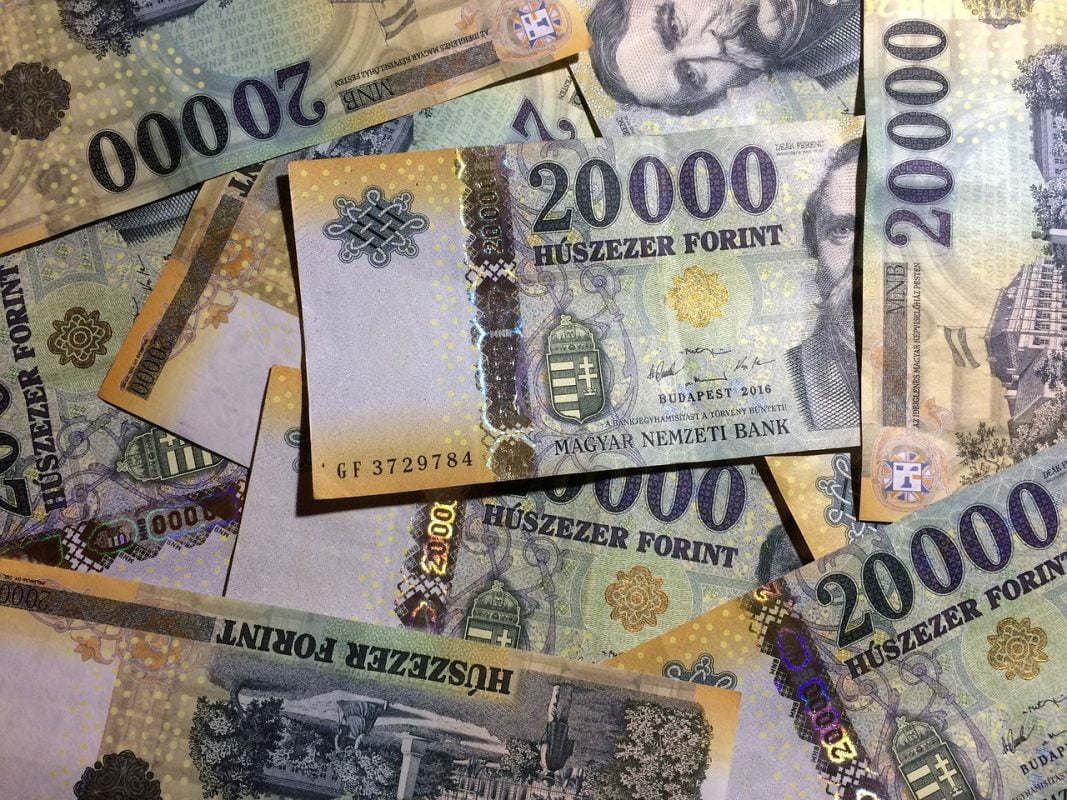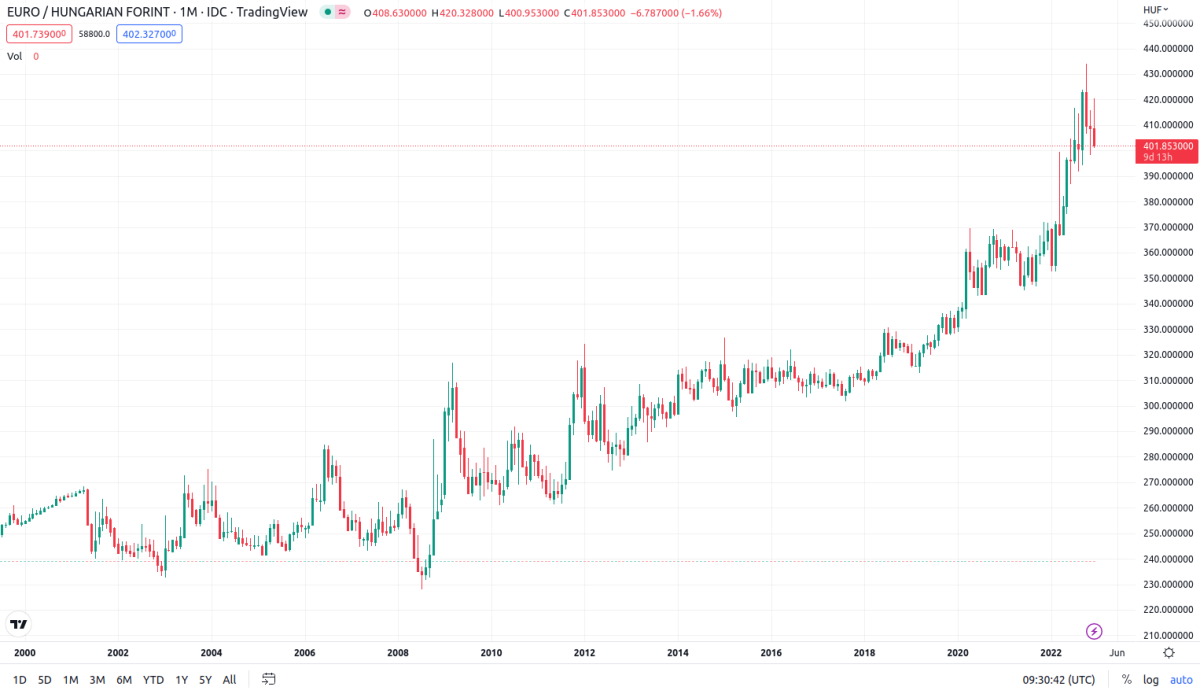Most of us try to find out approximately how much money you will use as you come to Budapest before you arrive. How much does it cost to eat in a restaurant? What is the price of a beer in a pub? What do I need to pay for bread in a grocery store? What is the cost if I want to visit the Hungarian Parliament or pay the entrance fee to the Matthias Church or the Stephen’s Basilica in Budapest? We have written lots of articles about the currency in Budapest and whether or not Budapest is an expensive city before, but this article is yet another attempt at helping those coming to Budapest shortly plan better.
It is important to know that the prices in Hungary have increased a lot since 2020. As a result, many people who visited the city 5-6 years ago are shocked by the prices they see and pay as they eat in restaurants, drink coffee and eat cakes at confectioneries, or pay the entrance fees to museums and attractions in Budapest. Instead of just writing words in general about the prices in Budapest, let us take a closer look at some prices for some of the most popular objects and places that you might be interested in.
Price examples that will help you prepare for your trip to Budapest.
Prices from a grocery store
Let us first imagine that you enter a grocery store in Budapest. Here are examples of prices for popular products and articles. These are just examples meaning that you might find similar products at a lower price, but you can also find similar objects at a much higher price.
(these prices origin from August 2024)
- 1 liter milk: 1 Euro
- 1/2 bread: 1,5 Euro (this is normal white bread)
- 1/2 liter beer: 0,75 Euro
- 1 1/2 liter Coca Cola: 1,5 Euro
- 1 kg apples: 1,5 Euro
- 1 1/2 liter water: 0,5 Euro
These are just some examples from a local grocery store in Budapest. Let us enter a pub to have a drink.
Prices as you enter a local pub.
- 1/2 liter local beer: 2,5 Euro
- 1/2 liter Guinness: 5 Euro
- 0,25 liter Pepsi: 1,5 Euro
- 0,1 liter wine: 1,25 Euro
- Cappuccino: 2 Euro
- Jim Bean (0,4 CL): 3 Euro
- Pizza (30cm): 9 Euro
Would you like to visit one of the favorite confectionaries instead?
Prices as you enter one of the famous confectionaries of Budapest.
- Hungarian classics (three cakes + vanilla ice): 15 Euro (Gerbeaud)
- Gerbeaud Pancake: 12 Euro (Gerbeaud)
- Espresso: 4 Euro (Gerbeaud)
- Cappuccino: 6 Euro (Gerbeaud)
- Coca Cola (0,25 liter): 4 Euro (Gerbeaud)
- 0,5 liter beer 7,5 Euro (Gerbeaud)
- New York Chocolate Cake: 11 Euro (New York)
- Ham and Cheese toast: 14 Euro (New York)
- New York Burger: 22 Euro (New York)
- Cappuccino: 10 Euro (New York)
- San Pellegrino water (0,75 liter): 11 Euro (New York)
- Beer (0,33 liter): 6 Euro (New York)

As you can see, New York is a very expensive place and most likely among the most expensive in all of Budapest. But, it is a beautiful place so if you don’t mind paying extra, it is worth the experience.
Prices if you want to enter museums and attractions in Budapest.
Would you like to learn more about certain aspects of the history of Hungary, or maybe you want to see a beautiful building from the inside? Here you have examples of how much you have to pay to visit popular museums, attractions, and buildings in Budapest.
The prices are based on the full-price entrance fee for an adult.
- Hungarian National Museum: 9 Euro
- St. Stephen’s Basilica: 6 Euro (basic ticket)
- Matthias Church: 8 Euro (basic ticket)
- Hungarian Parliament: 15 Euro (for EU members) – 30 Euro (for non-EU members)
- Szechenyi Thermal Bath: from 28 Euro
- Museum of Fine Arts: 13 Euro
- Budapest Zoo: 13 Euro
- Tropicarium: 13 Euro
- Madame Tussauds: 31 Euro

These are some examples of prices for popular attractions and locations in Budapest. Are you getting hungry? How much do you pay for popular meals at restaurants in Budapest?
Prices if you want to eat at a nice restaurant in Budapest.
- Pizza (32 cm): 10 Euro (this is a very average price)
- Basic Hamburger: 10 Euro (may vary a lot in both directions)
- Goulash Soup: 8-10 Euro
- Chocolate Souffle: 5-7 Euro
- Caesar Salad: 9-10 Euro
- Big Mac and Whopper? Check this article for more information.
These are very average prices, and the nicer the restaurant, the more expensive it becomes. In general, you can calculate the prices of starters moving between 5 and 15 Euro, main courses between 8 and 30 Euro, and desserts between 4 and 10 Euro.
We hope this short article has given you some more information about the prices in Budapest. If you have questions about other prices or a comment that you would like to share, use the comment field below!



 There are of course some exceptions to the rule, especially in smaller restaurants (like Comme Chez Soi) and if you visit Szentendre most shops there only accept payment in cash. However the general “rule” is that shops in the shopping street Vaci utca, shops in the malls and so on accept payment with VISA.
There are of course some exceptions to the rule, especially in smaller restaurants (like Comme Chez Soi) and if you visit Szentendre most shops there only accept payment in cash. However the general “rule” is that shops in the shopping street Vaci utca, shops in the malls and so on accept payment with VISA.



